If a customer ends up paying (e.g., a collection agency collects their payment) and you have already written off the cash they owed, you should reverse the account. As you’ll find a way to inform, there are a couple of transferring components in relation to allowance for doubtful accounts journal entries. To make issues easier to understand, let’s go over an example of bad debt reserve entry. For example, if 3% of your sales were uncollectible, put aside 3% of your gross sales in your ADA account. Say you’ve a total of $70,000 in accounts receivable, your allowance for uncertain accounts would be $2,a hundred ($70,000 X 3%).
Risk Classification Technique
GAAP permits for this provision to mitigate the risk of volatility in share price actions brought on by sudden changes on the steadiness sheet, which is the A/R stability on this context. Notice this transaction does not create any new expense since the expense was already recognized when the allowance was established or adjusted. Via constant monitoring and strategic motion based on this ratio, businesses achieve higher financial forecasting, optimize capital, and maintain enterprise operations successfully. This method is simple to use and understand, making it appropriate for corporations with relatively steady and predictable sales patterns. If yours is a drop delivery enterprise, you probably can simply monitor your orders and create new dropship orders in your suppliers primarily based on the client orders.
Methods For Estimating Allowance For Uncertain Accounts
This allowance helps your business plan better and keep away from surprises when a buyer cannot pay. It’s often used together with accounts receivable, which tracks what your clients owe you. When a particular customer has been identified as an uncollectible account, the next journal entry would happen. The first entry reverses the dangerous debt write-off by increasing Accounts Receivable (debit) and decreasing Unhealthy Debt Expense (credit) for the quantity recovered. The second entry data the payment in full with Money increasing (debit) and Accounts Receivable lowering (credit) for the amount obtained of $15,000.
Understand the essential accounting rules for managing uncollectible accounts. By estimating the expected uncollectible debts and creating an allowance for them, you’ll find a way to decrease the danger of great losses arising from bad debts and guarantee accurate financial statements. The accounting journal entry to create the allowance for doubtful accounts includes debiting the dangerous debt expense account and crediting the allowance for uncertain accounts account. The buyer https://accounting-services.net/ has $5,000 in unpaid invoices, so its allowance for uncertain accounts is $500, or $5,000 x 10%.
Recording Uncollectible Accounts
The Allowance Method is an accounting strategy favored for its adherence to the matching precept, guaranteeing bills and revenues are recorded in the identical allowance for doubtful accounts example period. This methodology entails estimating bad money owed at each accounting period’s finish and creating an allowance for doubtful accounts—a contra-asset deducted from accounts receivable on the balance sheet. The allowance for uncertain accounts, aka bad debt reserves, is recorded as a contra asset account under the accounts receivable account on a company’s stability sheet. In this context, the contra asset would be deducted from your accounts receivable property and thought of a write-off.
In this text, we’ll cowl how the allowance for doubtful accounts affects the balance sheet and income statement. The Allowance for Uncertain Accounts is a contra-asset account used in accounting to estimate the portion of a company’s receivables that will not be collected. This allowance is a key a part of the accrual accounting technique, ensuring that a company’s financial statements mirror a practical view of its financial health. When a enterprise sells goods or services on credit, it data accounts receivable, representing the money owed by prospects.
Effective administration of unhealthy debt involves sustaining a reserve account to cowl potential losses. Firms can leverage automation tools to boost the visibility of excellent invoices and streamline the AR processes. Collaboration between the AR group and different departments can enhance the invoicing process and scale back the dollar quantity of dangerous debt. Common feedback and analytics assist in refining methods and minimizing bad debt expense. The Share of Sales Method is a simple method used to estimate the Allowance for Uncertain Accounts based on a predetermined proportion of complete credit gross sales. This method depends on historic data and industry averages to determine the suitable percentage, making it comparatively easy to apply.
It represents an estimate of the portion of accounts receivable that is anticipated to become uncollectible because of numerous reasons, similar to buyer insolvency, bankruptcy, or incapability to pay. Be Taught how to calculate the allowance for uncertain accounts, create the adjusting entry for unhealthy money owed, and handle write-offs. We clarify the journal entry for allowance for uncertain accounts to ensure your financial statements are accurate and realistic. Then all the category estimates are added together to get one complete estimated uncollectible stability for the interval. The entry for unhealthy debt would be as follows, if there was no carryover steadiness from the prior period. The ultimate level pertains to companies with little or no exposure to the potential for dangerous debts, sometimes, entities that not often supply credit to its clients.
- For instance, if an organization has historically discovered that 1.5% of its credit score gross sales are by no means collected, this share is then utilized to the present period’s whole credit sales, not cash sales.
- Together With a provision for uncertain accounts can protect businesses from unforeseen losses by taking into account the likelihood that some clients would possibly fail to pay.
- The historical percentage technique works best in case you have a relatively small customer base and straightforward billing cycles.
The allowance for uncertain accounts is management’s goal estimate of their company’s receivables which would possibly be unlikely to be paid by customers. As time passes, corporations acquire higher details about which accounts won’t be collected. Economic circumstances change, buyer payment patterns evolve, and the receivables stability fluctuates. The accounts receivable growing older method is a report that lists unpaid buyer invoices by date ranges and applies a price of default to every date vary. You could discover that every one three strategies use the identical accounts for the adjusting entry; solely the strategy modifications the financial consequence.



